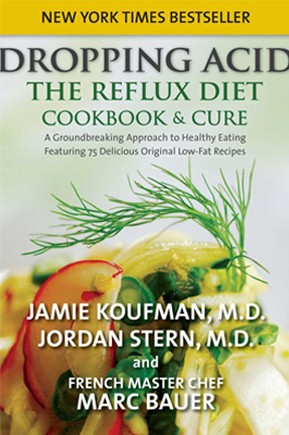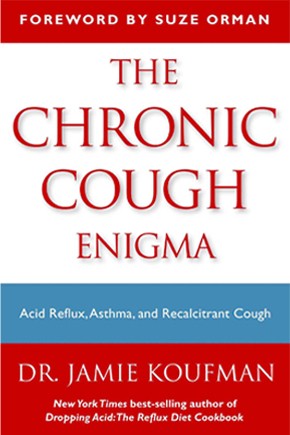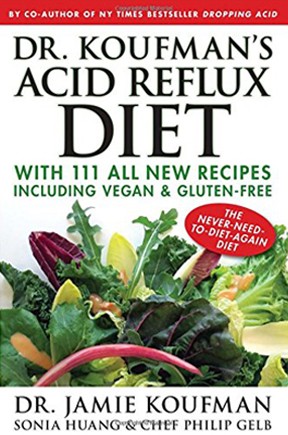At-A-Glance
- The U.S. spends over $330 billion each year on respiratory diseases—many of which are acid reflux misdiagnoses … specifically caused by respiratory reflux.
- Conditions such as asthma, allergies, sinusitis, COPD, and sleep apnea are frequently mistaken for other illnesses when reflux is the real problem.
- Respiratory reflux often happens silently during sleep, making it easy to miss and difficult to diagnose without specialized knowledge.
- Most doctors, including gastroenterologists and airway specialists, have little training in diagnosing or treating respiratory reflux—leaving patients with years of ineffective treatments.
Join Dr Jamie Koufman on Facebook Live at noon EST on the first Wednesday of each Month. If you miss it live, you can also see it on YouTube.
Acid reflux doesn’t just cause heartburn. It can hide in plain sight, quietly damaging the airways and being mistaken for other diseases. A major but little-known form of reflux, called respiratory reflux, is one of the most misdiagnosed conditions in medicine today. It doesn’t cause classic heartburn, often happens silently while you sleep, and can mimic a range of respiratory problems. Patients may spend years—and thousands of dollars—treating the wrong condition.
The consequences are staggering. In the United States, hundreds of billions of dollars are spent every year on conditions like asthma, allergies, sinusitis, chronic obstructive pulmonary disease (COPD), and sleep apnea. For many patients, reflux is the true cause, or at least a major contributor. When it is overlooked, treatments fail, symptoms persist, and disease can progress unchecked.
This article explains why respiratory reflux is so often missed, how it imitates other airway diseases, and what you can do if you suspect it’s behind your symptoms. Below are five of the most common and costly conditions that are frequently misdiagnosed when reflux is the real problem.
Asthma: Often Respiratory Reflux in Disguise
Asthma affects 31 million Americans and costs $80 billion annually, yet many of these diagnoses may be incorrect. During an asthma attack, the bronchial tubes inside the lungs swell and narrow, making it difficult to force air out of the lungs during exhalation. Asthma is never a problem with breathing in.
Over the course of my career, I have seen hundreds of patients list asthma on their intake forms. When asked, “During an asthma attack, do you have more trouble breathing in or breathing out?” four out of five—about 80 percent—say “in.” If this finding holds true more broadly, most asthma diagnoses may actually be misdiagnoses. These same patients often report that asthma medications provide little or no relief.
It is concerning that many physicians, including pulmonologists, do not recognize this distinction. Trouble breathing out is asthma; trouble breathing in is most often caused by reflux. Because silent respiratory reflux frequently goes unrecognized, it is one of the leading causes of incorrect asthma diagnoses. If as many as 80 percent of asthma cases are misdiagnosed, then of the $80 billion spent annually on asthma care, $64 billion may be wasted while the true cause—respiratory reflux—remains untreated.
Allergies: When It’s Actually Respiratory Reflux
In the United States, about $42.8 billion is spent each year on allergy treatment. Yet roughly half of these cases may be misdiagnosed and are actually caused by respiratory reflux.
True allergies—such as allergic rhinitis—usually produce thin, clear mucus along with sneezing, itchy eyes, and sudden attacks when exposed to triggers like ragweed or pollen. In contrast, respiratory reflux is associated with thick mucus, which can coat the vocal cords and cause persistent throat clearing. Thin mucus from allergic rhinitis never reaches the vocal cords.
If your main symptom is thick postnasal drip, especially if it is worse in the morning or after lying down, reflux is a more likely explanation than allergies. Recognizing this difference can prevent years of ineffective treatment and unnecessary expense.
Sinusitis: A Common Misdiagnosis for Respiratory Reflux
The United States spends about $11 billion annually on sinus problems, much of it on antibiotics and surgery. True sinus infections are far less common than most people believe. Facial pressure and postnasal drip are not necessarily signs of sinusitis, yet these symptoms often lead to that diagnosis.
Imaging can add to the confusion. Radiologists sometimes describe mucoperiosteal thickening—thickening of the sinus lining—as “chronic sinusitis,” which can then lead to unnecessary procedures such as balloon sinuplasty or other sinus surgeries. In reality, mucoperiosteal thickening is often caused by reflux and does not require antibiotics or surgical intervention.
Many patients have undergone multiple sinus surgeries—often for postnasal drip and facial discomfort—only to find their symptoms unchanged. By the time they are referred for reflux evaluation, they have already endured years of ineffective treatments and invasive procedures. Identifying reflux earlier can help patients avoid this cycle and find lasting relief.
COPD: Frequently Caused or Worsened by Respiratory Reflux
Approximately 15 million Americans have chronic obstructive pulmonary disease (COPD), and 25–30 percent are lifetime non-smokers. Many others quit smoking years, or even decades, before diagnosis, yet their disease continues to progress. A downhill course in COPD patients who stopped smoking long ago is often due to respiratory reflux.
If you quit smoking 25 years ago but have had progressive COPD ever since, the problem is not the smoking—it is almost certainly life-threatening respiratory reflux. This is treatable, and in my experience, every patient in this category—100 percent—had abnormal reflux testing. The majority had substantial improvement, and many saw their disease stabilize, once their reflux was addressed.
In other words, progression toward respiratory failure and death can often be halted with effective anti-reflux treatment. All lung diseases can be caused, worsened, or accelerated by respiratory reflux. Every patient with COPD, recurrent pneumonia, cystic fibrosis, or other primary lung diseases should follow the anti-reflux measures outlined below.
Sleep Apnea: Linked to Many Years of Silent Nocturnal Respiratory Reflux
The United States spends approximately $150 billion a year on sleep apnea treatment, averaging about $5,000 per patient. Sleep apnea is common among people who also have other serious health conditions often linked to diet and lifestyle, such as obesity, diabetes, and heart disease.
Sleep apnea itself is not a misdiagnosis, but its cause often is. In many cases, years or even decades of silent nocturnal respiratory reflux (SNoRR) gradually narrow the airway until snoring progresses to obstructive sleep apnea. It may take one to two decades of SNoRR for this progression to occur.
When I was in medical school, the diagnosis of sleep apnea was virtually unknown. It took generations of poor dietary patterns and long-standing reflux for this type of airway obstruction to become widespread. The throats of patients with sleep apnea are often severely constricted, a finding that can be identified through a simple throat examination. Using an ultra-thin endoscope passed through the nose, the classic appearance of a sleep apnea pharynx is unmistakable—and, in my experience, could be caused by nothing other than chronic SNoRR.
Unfortunately, otolaryngologists, who are responsible for examining the throat, often do not recognize the reflux-related changes that lead to sleep apnea. The same long-term anti-reflux measures described below are recommended for sleep apnea.
Practical Steps to Prevent and Treat Respiratory Reflux
Protecting your airways and slowing disease progression begins with sustainable reflux control habits. I recommend these steps for anyone with COPD, recurrent pneumonia, cystic fibrosis, sleep apnea, and other reflux-related respiratory conditions:
- Eat dinner early with no snacking afterward
- Avoid fast food and carbonated beverages
- Elevate the head of the bed as much as is comfortable
- Follow a low-acid, relatively low-fat diet
- Take an alginate before bed
- Avoid alcohol
Final Thoughts on Acid Reflux Misdiagnosis
Respiratory reflux is a hidden driver of disease and a major source of misdiagnosis. The result is billions of dollars spent on ineffective treatments while the true cause remains untreated.
If you have chronic respiratory symptoms—especially if standard treatments have failed—consider the possibility of reflux. Seek an evaluation from a clinician who understands respiratory reflux, and begin long-term measures now to prevent further damage.
For more information about diagnosis and treatment of acid reflux, see two companion books on Amazon: Dr. Koufman’s Acid Reflux Diet and Dropping Acid: The Reflux Diet Cookbook & Cure. If you would like to receive personalized guidance and strategies for lasting relief, consider scheduling an online consultation.










